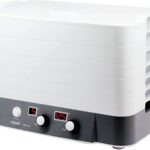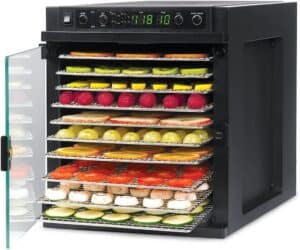
By dehydrating it, you are certain that your food is safe for your health. On the other hand, dehydrated food remains fresh and retains most of its nutritional content. Such food can be consumed later, hence ensuring food availability in all seasons. Therefore, Food Dehydration is the most common way to preserve food in a healthy kitchen. Besides, t can prepare a long list of delicious snacks high in nutritional value.
Read More: Hamilton Beach 32100A Digital Food Dehydrator Review
Table of Contents
Benefits of Food Dehydrating
Food dehydration is a healthy practice that every home can adopt and enjoy countless advantages from it. For instance, dehydrating fruits intensifies their flavor hence making them palatable. Dehydrated food also weighs less and occupies less space, so you can take it out with you.
For those with tight budgets and who would like to save money, dehydrators will assist you in achieving this. For example, if it is common in your household that you buy excess fresh food that you are unable to consume on time, all you need is a dehydrator to dry your food and consume them later. Through dehydration, you will have avoided food wastage hence saving your money. With your dehydrator, even the most perishable foods will not worry you when it comes to preservation.
What Food Is Suitable For Dehydrating?
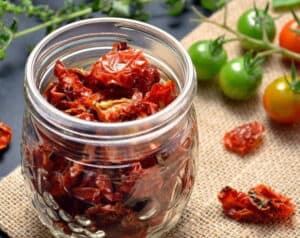
- Vegetables such as onions, carrots, broccoli, peppers, mushroom, spinach, and others for snacking, backpacking, or adding to your meal. With a dehydrator, you can make sun-dried tomatoes for Italian recipes;
- Fruits and Berries like blueberries, apples, cherries, coconut, banana, figs, mangoes, pears, prunes, and others for snacking, adding to the smoothies or granola breakfast; you also can easily make fruits leather, and a variety of desserts that are available from the raw food cookbooks;
- Meat and fish, it is suitable not only for making beef jerky, but you can dehydrate any type of meat or fish for adding some protein for your backpacking meal or adding to your homemade soups, salads, and stews;
- Herbs, the dehydrator is indispensable for preserving and storing seasonal herbs for the winter period. You can dehydrate almost any herb including parsley, oregano, dill, and any other;
- Sprouted grains, seeds, and nuts, these ingredients are often used for many diets, while the dehydrated sprouts and grains are more palatable than the raw ones, with a dehydrator your detox period will be more appealing than without;
- Raw crackers, crepes, granolas, deserts, and all types of meals for raw food diets.
Home Dehydration vs. Dry Food From The Store
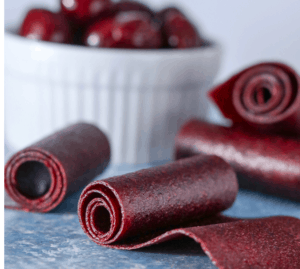
Home preserved food is safer for people who are allergic to food preservatives, people with high blood pressure, or sensitive to other additives detrimental to your health. On the other hand, it is cheaper to prepare home-dehydrated food than buy them from the shop. And for homemade dehydrated food, you will not use preservatives or can determine yourself the quantity of salt that is appropriate to add to your preserved meal.
Food Dehydrating Temperature
However, you need to be aware of the best temperature to dehydrate specific food types. Most food varieties are dehydrated at a temperature ranging from 115ᵒ F‑140ᵒ F / 46◦C — to 60◦C. If raised beyond this range, the food might eventually cook. It is also worth noting that the USDA recommends meat and fish be dehydrated at a higher temperature to eliminate food poisoning. Here is the precise range of temperature for different food types:
- Vegetables – 115◦F‑130◦F/46◦C — 55◦C;
- Fruits and Fruits Leather Rolls– 125◦F‑135◦F/50◦C — 57◦C;
- Herbs – 95◦F‑105◦F/35◦C – 41◦C;
- Raising bread – 105◦F ‑110◦F/40◦C ‑43◦C;
- Yogurt — 110◦F‑120◦F/38◦C ‑44◦C;
- Meat and Fish – 155◦F‑165/68◦C‑74◦C, if your dehydrator operates at a temperature lower than 155◦F‑165/68◦C then you are advised to pre-cook the meat before dehydrating it;
- Raw Food recipes should be processed under 115 °F/46.1°C. This temperature ensures that all the enzymes and other valuable nutrients are not destroyed due to the high temperatures exposure.
Time for Dehydrating Different Food Types
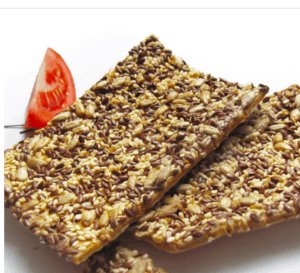
- Most vegetables and fruits take 5–14 hours to dry fully;
- Herbs and spices take 2–4 hours;
- Nuts can take 10–14 hours;
- Fruit leather rolls take 4–6 hours;
- Fish jerky can take 12–14 hours;
- Raw food cracker drying takes on average 12–14 hours;
- Raw food burger dehydrating can last up to 14–16 hours
It is worth mentioning, that if you increase the temperature in the dehydrator also, it will not dry the food quicker instead it may harder the outer food texture thus creating a problem for deep drying the piece of food and leaving it humid inside. Normally, the food will dry quicker than the larger surface area it has.
Dehydrator vs. Oven for Food Dehydration
The use of an oven can also do dehydration. However, dehydrators are more convenient compared to other devices like ovens. In addition, dehydration is a low-temperature process while using a conventional oven, it is cumbersome to maintain a constant temperature for uniform drying.
The airflow is another important dehydration factor, if you have an oven without a fan then it will have a hot spot and no air circulation. With such types of conventional ovens, you have to keep the door open to allow the moisture to get out. Finally, the oven is not energy efficient for dehydration and it consumes more energy compared to dehydrators, you will need to keep your oven working for up to 12–14 hours. If you want to dry your food within a short time without frequent fiddle and checks. In this case, what you require is simply a dehydrator.
Dehydrator Noise Release Level
Though food dehydrators are far much better for food drying than ovens, they are noisier than ovens. Noise production is a typical feature in them due to the presence of fans. The amount of noise they produce varies in a range of 45–65 Db depending on the brand and construction of this kitchen appliance; typically, the larger horizontal air-flow dehydrators, the noisier than vertical air-flow devices. If you are determined to purchase a less noisy one, it is always advisable to check the product description provided. Also, keenly check the decibel rating and consumer reviews.
Snacks To Take Out or Meal for Backpackers
Since we can dehydrate a wide variety of foods at home, one can easily prepare a complete meal for backpacking. You can dry not only trail snacks such as fruits, veggies, and beef jerky but also lean ham, turkey, roast beef, and even ground beef, tuna, and shrimp. During backpacking and hiking, you require foods with a lot of calories, and once you own a good quality dehydrator this is not a problem.
Cooked pasta, beans, and grain can also be dehydrated for adding them later in your meal. Eating a balanced diet during such a time maintains your good health while starchy food will provide the food needed during this period. In addition, a dehydrator eliminates moisture from food hence making it light to carry.
Storing Dehydrated Food Properly
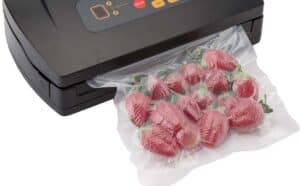
Thus, the way you store your dehydrated food is depending on how long you plan to keep it before consuming it. Some of the best methods to non-meat store dehydrated food for the short term for up to 1 year include dry air-tight insect-proof storage containers, dry canning jars, and air-tight plastic freezer bags.
However, if you wish to keep your dehydrated food for longer than 1 year, the best way to use vacuum packing is with an oxygen absorber placed inside the bag. The vacuumed package brings oxidation to a minimum and retains the nutritional value of the stored food. Certainly, you should ensure that the containers or vacuumed packages with dehydrated food are stored in a dark, dry, and cold place.
The dehydrated meat and fish will last a maximum of 1 month in the plastic storage containers and plastic freezer bags. You can store the meat in fish for up to 1 year if you keep it in the fridge in e vacuum-sealed package.
Using Dehydrator Not Only For Food Dehydration
It is also worth noting that dehydrators are not only for food dehydration. Yes, you can use your dehydrators to carry out other activities that can contribute to bettering your life. For instance, if you are a clay-work enthusiast, you can use it to dry your clay piece. Although it cannot work as an actual kiln can do, it will dry the clay models evenly.
Furthermore, you can easily make fire starters that are orange-scented. With a dehydrator, you can dry orange peels to add them to start a fire or use them in an already burning fire to give off a fantastic citrus fragrance.
Final Thoughts
In a nutshell, dehydrators can significantly contribute to increasing healthy food consumption in everyday life without much effort. It can significantly reduce food wastage. Food poisoning also has become a story of the past since food dehydration reduces the chances of survival of disease-causing micro-organisms. Make fresh fruit snacks for taking it out regardless of the season. Besides, food dehydration is a simple process that every family member can do; even kids can quickly learn how to use dehydrators.



